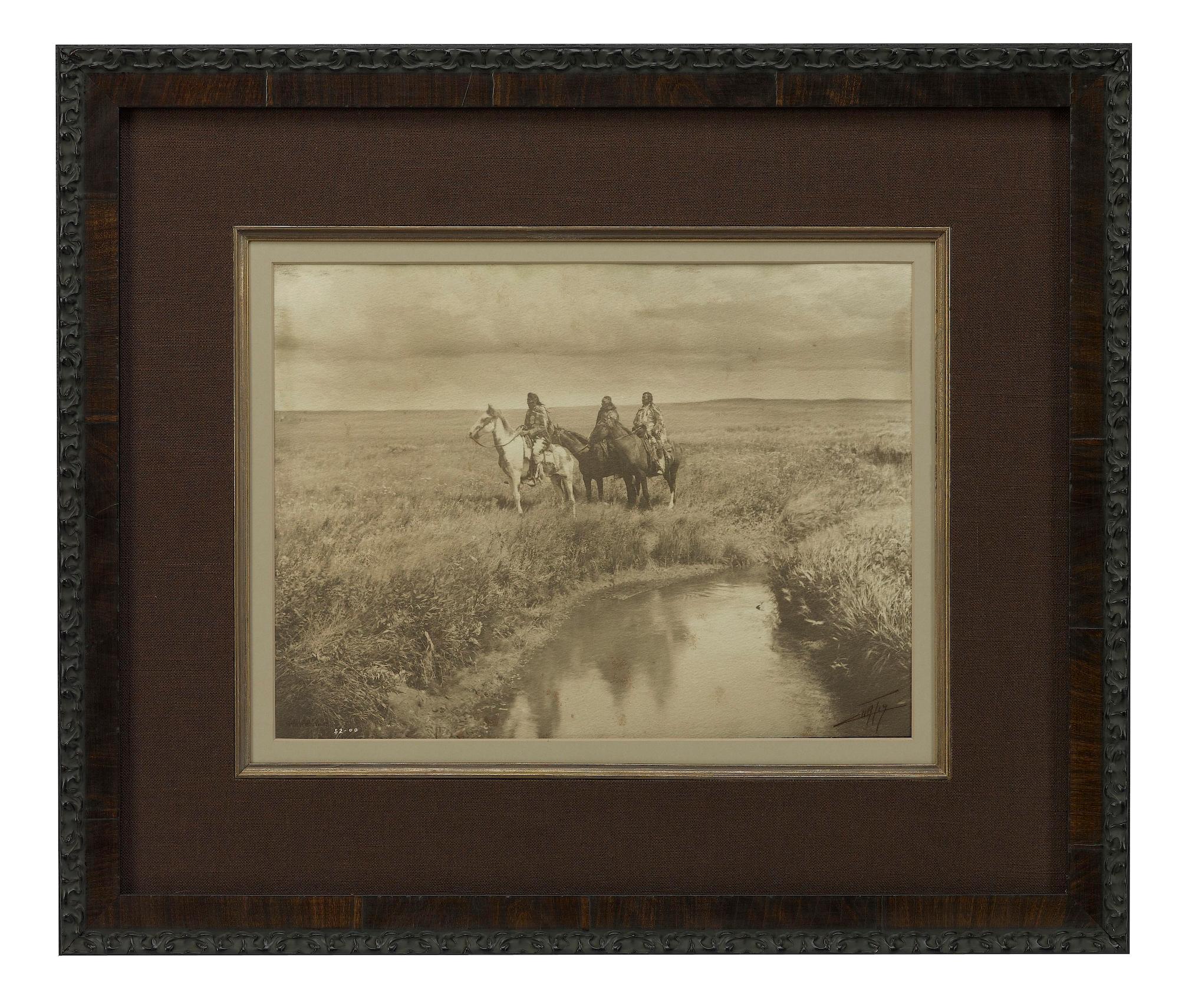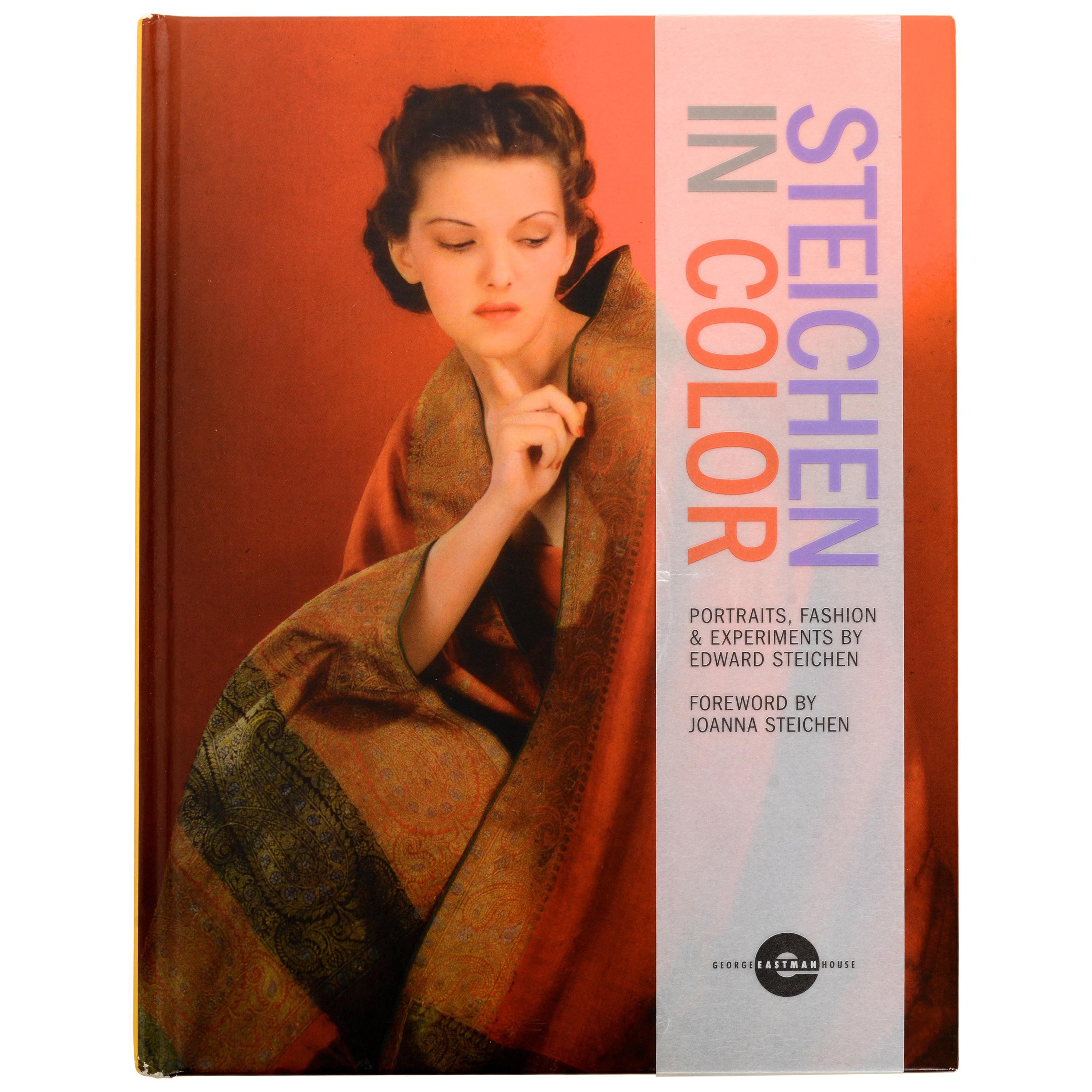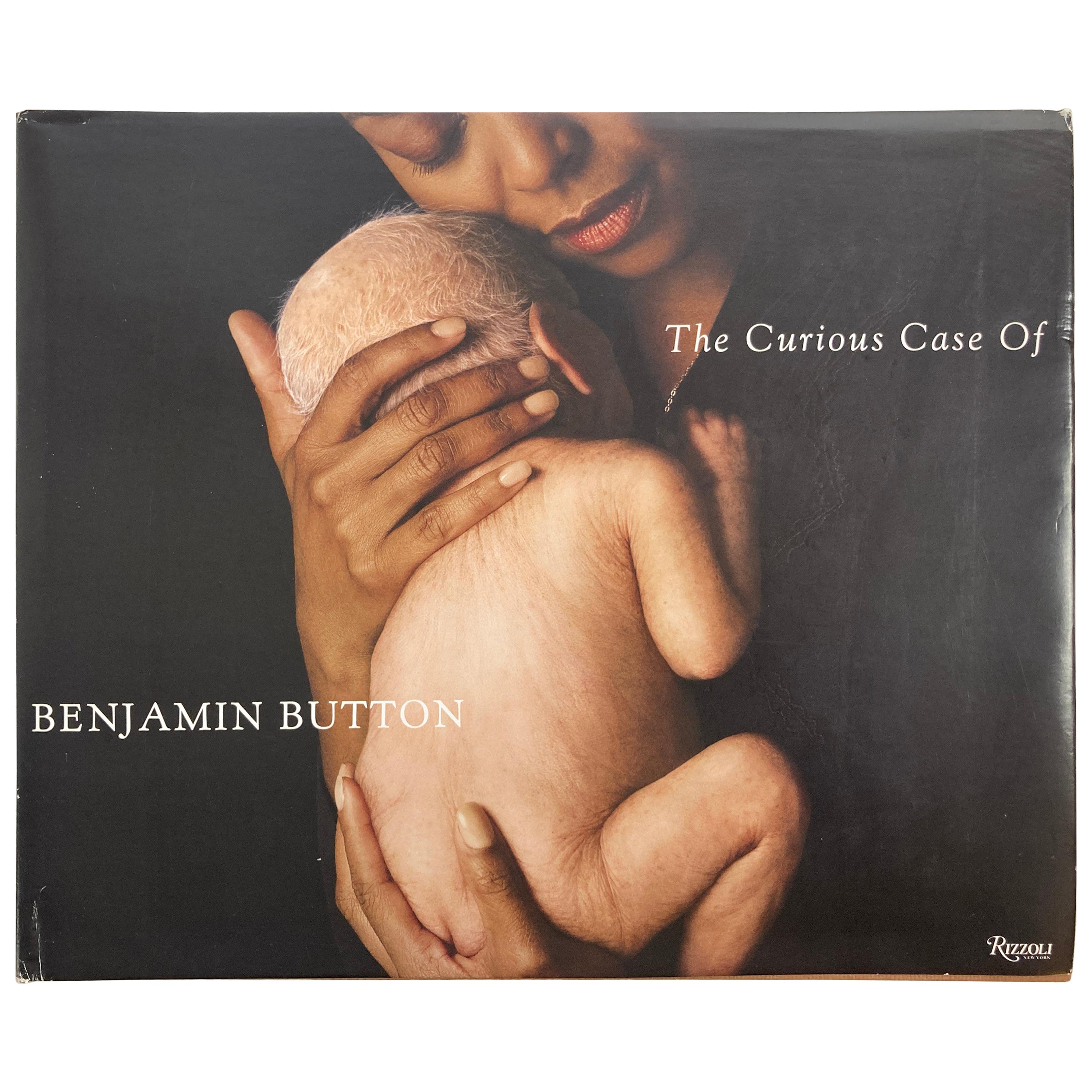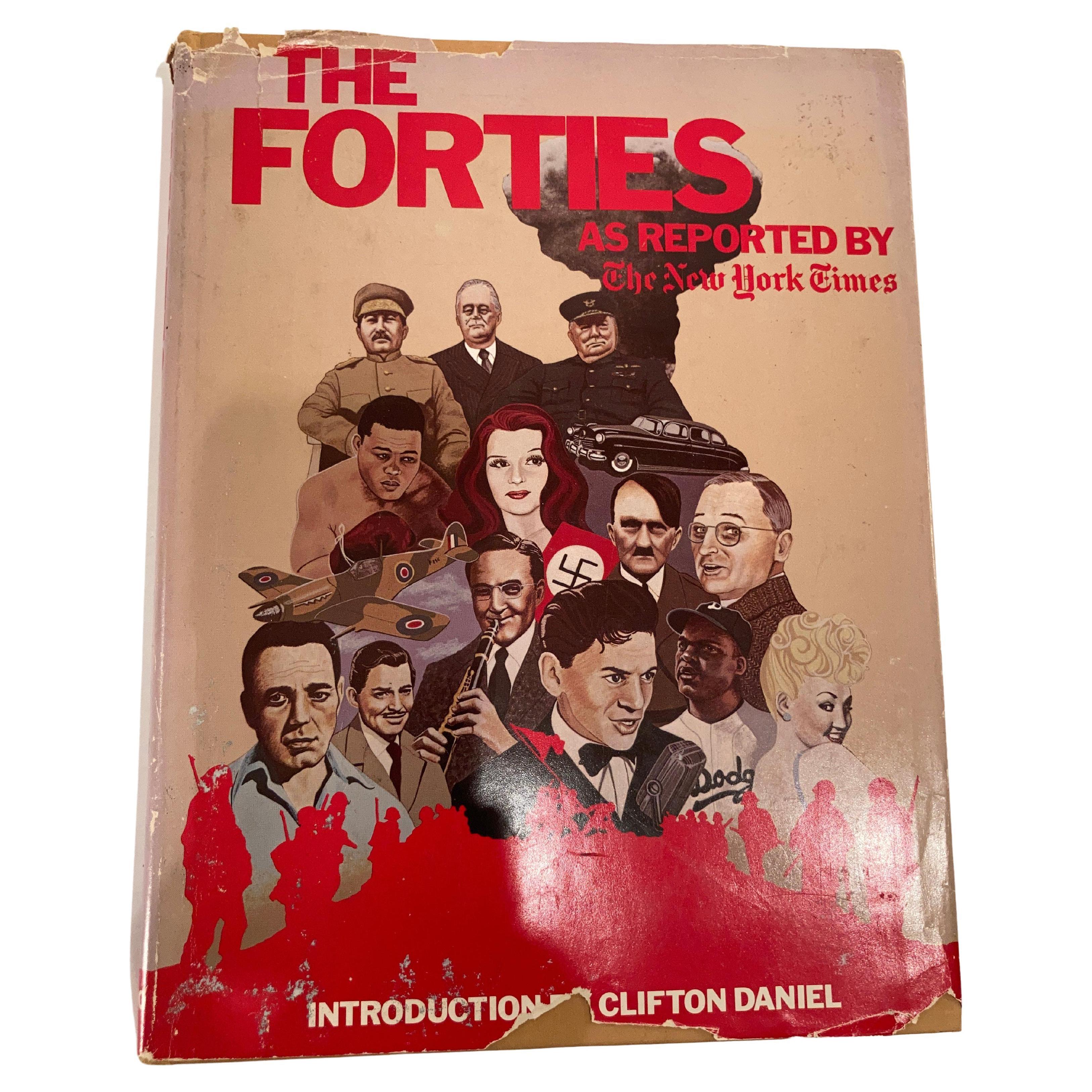Original Edward S. Curtis Photogravure, "The Klamath Hunter" 1923
About the Item
- Creator:Edward S. Curtis, 1868-1952 (Photographer)
- Dimensions:Height: 17.8 in (45.22 cm)Width: 21.8 in (55.38 cm)Depth: 0.01 in (0.26 mm)
- Materials and Techniques:
- Place of Origin:
- Period:
- Date of Manufacture:1923
- Condition:Wear consistent with age and use. Good condition. Photogravure. Unframed.
- Seller Location:Colorado Springs, CO
- Reference Number:
Edward S. Curtis, 1868-1952
Edward S. Curtis is arguably the most influential photographer of the American West. His work unquestionably ranks among that of the most important photographers of the 20th century.
Curtis was first and foremost; an extremely gifted and sophisticated artist whose work had the duality of being an incredible artistic creation at the same time as being a document of a people. He was uniquely able to create, out of whole cloth, a lasting vision of the American Indian that never existed before it was first seen through his photographic lens.
Edward Curtis produced images of the American Indian that convey a dignity, a universal humanity and a certain remaining majesty that transcend literally all other work ever done on the subject. In his photographs we see images that are uniquely able to stand alone in the world of photography.
Beginning in 1898 and continuing through 1928, Curtis dedicated his life to documenting the traditional lifeways and cultures of 128 American Indian tribes living west of the Mississippi River, from Alaska to the Mexican border.
Curtis was a genius of an artist possessed by a singular obsession to preserve the traditional lifeways of the American Indian.
Astonishingly, focusing all his immense talents over a staggering 30-year period, Curtis accomplished what he set out to do; he did save the traditional lifeways of these Native Peoples but at tremendous personal cost. It cost him his marriage, it cost him his health, and it cost him any possible financial stability he might ever have had.
In spite of all this, he persevered and left a body of work never to be equaled in the field of photography.
Find authentic Edward S. Curtis photography on 1stDibs.
(Biography provided by Bruce Kapson Gallery)
- ShippingRetrieving quote...Ships From: Colorado Springs, CO
- Return PolicyA return for this item may be initiated within 10 days of delivery.
- "Three Chiefs, Blackfoot, Montana" by Edward S. Curtis, Platinum Print, 1900By Edward S. Curtis, 1868-1952Located in Colorado Springs, COPresented is a rare, platinum Master Exhibition Print of Edward Curtis’ The Three Chiefs. Typical of Curtis’ Master Exhibition Prints, this platinum print is double-mounted, signed, with an embossed copyright credit and date stamp. His numeric notation “52-00” is in the photographic negative. Curtis photographed The Three Chiefs during his two weeks on a Blackfoot reservation in the summer of 1900. The photograph depicts three Piegan men in traditional dress on horseback, situated next to a small stream with an expansive cloud-filled sky behind them. The Piegans were the largest group in the Blackfoot Confederacy and still retained a majority of their original culture when Curtis visited the tribe. It reportedly took Curtis several days to find the perfect prairie backdrop and riders for this photo, yet his patience paid off. The image was pivotal in enabling Curtis to form his vision for his next project - his ambitious 20 volumes “North American Indian”publication. This print is believed to be one of only three oversized, platinum Master Exhibition Prints of this image in existence. It was printed by Curtis specifically for his East Coast exhibition tour of 1905-1906. Curtis chose only a small number of what he believed to be his finest negatives to produce prints for the show. He never again mounted an exhibition of his work, nor produced such distinctive, large-format platinum prints. “The extraordinary rarity of The Three Chiefs becomes clearer when viewed in the context of other Master Exhibition Prints, principally the 108 in the Peabody Essex Museum in Salem, Massachusetts, the largest collection in existence. The Museum, however, is missing a number of early, iconic images, including The Three Chiefs. It has long been assumed that these missing prints were held elsewhere, possibly in the collection of The New York Public Library. This theory has been substantiated by the Curtis scholar, Bruce Kapson, who unearthed a cache of letters from Curtis to J.P. Morgan and to Morgan's librarian, Ms. Bella da Costa Greene in the Pierpont Morgan Library archives in 2007. The correspondence establishes that 58 of the 100 prints in The New York Public Library's collection are actually Master Exhibition Prints, specifically selected by Curtis for J.P. Morgan as the best examples of his work. A typed letter, dated March 1907, from Ms. Greene to Curtis states: 'I enclose herewith a list of Indian photographs which you sent to Mr. J.P. Morgan'. The letter is accompanied by a handwritten list of 58 photographs, including The Three Chiefs (print number 52.) Morgan donated this group of prints to The New York Public Library in 1912.” (Christie’s Live Auction 1893 Catalog, 2007). Curtis’ platinum prints make up less than 1/2 of 1% of all of the work he created. Curtis’ platinum prints were created only for exhibition or direct sales to patrons and they were always made by Curtis himself. One significant dealer in Curtis prints...Category
Antique Early 1900s American Photography
MaterialsPaper
- "Porcupine - Cheyenne" by Edward S. Curtis, 1911By Edward S. Curtis, 1868-1952Located in Colorado Springs, COPresented is a fine photogravure portrait of a Cheyenne man with cottonwood leave headdress by Edward Curtis. The image is Plate 216 from Supplementary Portfolio 6 of Edward Curtis' ...Category
Vintage 1910s American Photography
MaterialsPaper
- "Ogalala Woman" by Edward S. Curtis, 1908By Edward S. Curtis, 1868-1952Located in Colorado Springs, COPresented is a fine photogravure portrait of an Ogalala woman by Edward Curtis. The image is Plate 94 from Supplementary Portfolio 3 of Edward Curtis' epic project The North American...Category
Antique Early 1900s American Photography
MaterialsPaper
- "Bear's Teeth - Arikara" by Edward S. Curtis, 1908By Edward S. Curtis, 1868-1952Located in Colorado Springs, COPresented is a fine photogravure portrait of Bear’s Teeth of the Arikara tribe by Edward Curtis. The image is Plate 154 from Supplementary Portfolio 5 of Edward Curtis' epic project ...Category
Antique Early 1900s American Photography
MaterialsPaper
- "Horse Capture - Atsina" by Edward S. Curtis, 1908By Edward S. Curtis, 1868-1952Located in Colorado Springs, COPresented is a fine photogravure portrait of an Atsina man named Horse Capture by Edward Curtis. The image is Plate 170 from Supplementary Portfolio 5 of Edward Curtis' epic project ...Category
Antique Early 1900s American Photography
MaterialsPaper
- "New Chest, Piegan" by Edward S. Curtis, 1910By Edward S. Curtis, 1868-1952Located in Colorado Springs, COPresented is a fine photogravure portrait of a Piegan man named New Chest by Edward Curtis. The image is Plate 200 from Supplementary Portfolio 6 of Edward Curtis' epic project The N...Category
Vintage 1910s Photography
MaterialsPaper
- Steichen in Color Portraits, Fashion & Experiments by Edward Steichen, 1st EdLocated in valatie, NYSteichen in color: Portraits, fashion & experiments by Edward Steichen and Foreword by Joanna Steichen. Sterling Innovation September 2010. 1st Ed hardcover no dust jacket as publish...Category
2010s American Books
MaterialsPaper
- The Curious Case of Benjamin Button the Making of the Motion Picture BookLocated in North Hollywood, CAThe Curious Case of Benjamin Button: The making of the motion picture hardcover illustrated book December 2, 2008 by David Fincher (Author), Eric Roth...Category
21st Century and Contemporary North American Arts and Crafts Books
MaterialsPaper
- Feeling the Spirit: Searching the World for the People of Africa BookLocated in North Hollywood, CA"We are Africans not because we are born in Africa, but because Africa is born in us. Look around you and behold us in our greatness. Greatness is an African possibility; you can mak...Category
Late 20th Century African Tribal Books
MaterialsPaper
- National Geographic The Photo Ark The Quest to Document the World's AnimalsLocated in North Hollywood, CANational Geographic The Photo Ark: One Man's Quest to Document the World's Animals. Animal Ark: Celebrating our Wild World in Poetry and Pictures (National Geographic Kids) Hardcover – February 14, 2017 Synopsis: The lush and unique photography in this book represents National Geographic's Photo Ark, a major initiative and lifelong project by photographer Joel Sartore to make portraits of the world's animals—especially those that are endangered. His powerful message, conveyed with humor, compassion, and art: to know these animals is to save them. Animal Ark: Celebrating our Wild World in Poetry and Pictures (National Geographic Kids) Hardcover – February 14, 2017 by Kwame Alexander (Author), Mary Rand Hess (Author), Deanna Nikaido Sartore is circling the globe, visiting zoos and wildlife rescue centers to create studio portraits of 12,000 species, with an emphasis on those facing extinction. With a goal of photographing every animal in captivity in the world, he has photographed more than 6,000 already and now, thanks to a multi-year partnership with National Geographic, he may reach his goal. This book showcases his animal portraits: from tiny to mammoth, from the Florida grasshopper sparrow to the greater one-horned rhinoceros. Paired with the eloquent prose of veteran wildlife writer Douglas Chadwick, and an inspiring foreword from Harrison Ford, this book presents a thought-provoking argument for saving all the species of our planet. About the Author: JOEL SARTORE is a photographer, speaker, author, teacher, and a 25-year contributor to National Geographic magazine as well as Audubon, Geo, Time, Life, Newsweek, and Sports Illustrated. He has written several books including National Geographic's Rare: Portraits of America's Endangered Species, Photographing Your Family, and Let's Be Reasonable, a collection of essays from the CBS Sunday Morning show. Sartore and his work have been the subjects of several national broadcasts, including the National Geographic Channel's Explorer, the NBC Nightly News, NPR's Weekend Edition, and an hour-long PBS documentary, At Close Range. He is also a contributor on the CBS Sunday Morning Show with Charles Osgood...Category
21st Century and Contemporary North American Folk Art Books
MaterialsPaper
- The Forties As Reported By The New York TimesLocated in North Hollywood, CAThe Forties: As Reported By The New York Times By Keylin, Arleen; Cohen, Jonathan. Title The Forties: As Reported by the New York Times Author Keyli...Category
20th Century American Folk Art Books
MaterialsPaper
- Original Vintage 1963 Beatles Concert TicketLocated in Jersey, GBAn original ticket to the Beatles' November 12, 1963 show at the Guildhall in Portsmouth. The Beatles and their music need no introduction. As a result...Category
Vintage 1960s Historical Memorabilia
MaterialsPaper






